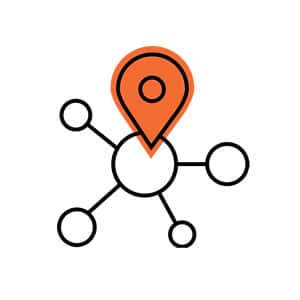
Attribution - How to track donor conversions
— Written by Rachel Monaghan, Digital Campaign Executive, Marlin Communications
What inspired your audience to convert into a donor?
When you have multiple channels delivering campaigns to your audience it can be hard to decipher exactly what inspired them to convert. An attribution model gives you the tools to accurately track your digital fundraising success and conversions. It basically allows you to dig deeper into what interactions and channels are driving donations from your supporters and gives you a fuller picture into understanding your donor’s journey.
What is an Attribution model?
A marketing attribution model is a framework that helps analyse the touchpoints, or marketing channels, that should receive the credit for a conversion. It also determines the value that should be given to specific touchpoints along the donor journey once they have converted. Whether that be a lead, event. registration, donation, or regular donation.
The main objective of an attribution model is to be able to track donors and participants through their journey and to provide quality data in their reporting to use when planning new strategies.
We’ll take you through the most common attribution models and how they are utilised to help optimise your campaign strategy.
First-Touch or Click Attribution
First touch Attribution much like the name implies gives credit to the first touchpoint that first introduced your audience to your organisation. This is regardless of whether the conversion was actually influenced by that campaign or not. This can be valuable to show the role in the donor journey in a more top-of-funnel approach.It essentially shows where the initial awareness stemmed from that introduced this now donor to you.
For example, say you are running a P2P event and your target audience first clicks a Google Search Ad and visits your website but then leaves without registering. Later on they are then served a Facebook ad through your retargeting audience and decide to register for your P2P event. 100% of the credit for that registration would be attributed to Google Ads. This model helps us understand where our participant first heard of the event and where the seed was planted for them to eventually convert by registering their details
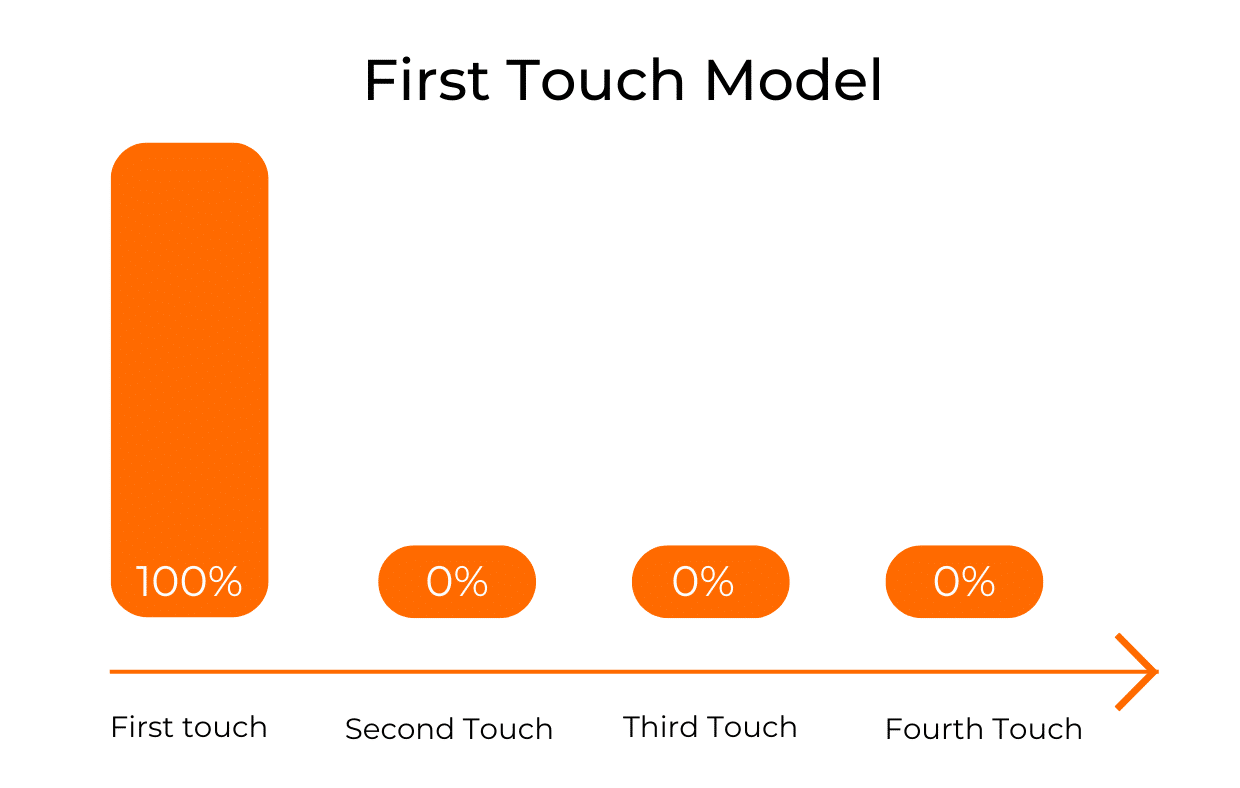
Last-Touch or Click Attribution
This method of attribution is determined by the last action before a user makes a conversion.So the credit of a donation will go to the last known channel that was clicked through before a conversion.
For example, if a donor clicked through on an ad they saw on Instagram but then went and google searched your organisation and made a donation to your campaign on your website – then the donation would be attributed as the last action they took. This model allows us to see what actually made the donor convert and allows you to determine the value of the last touchpoint.
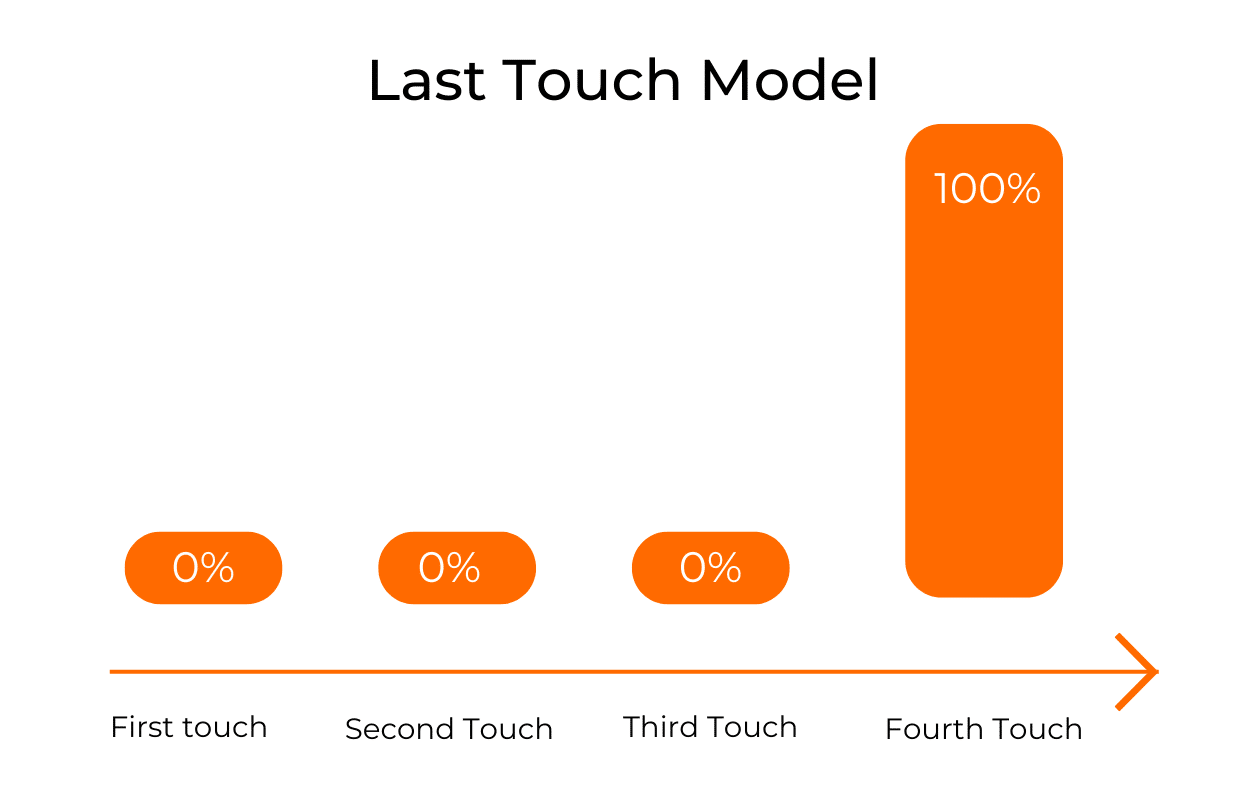
Multi-Touch Attribution
And lastly the multi-touch attribution model measures and assigns value to all of the interactions a contact had up to a key moment in their journey. Each touch point is assigned a value in journey to the conversion giving a more rounded picture of how the conversion eventuated.
Within the multi-touch attribution model there are a few different models to consider which might be more relevant to your donor journey. These include:
Linear Multi-Touch Model: This model gives equal weight to each touchpoint made in the journey that leads to the conversion.
For example a user clicked through on a Facebook ad, then clicked through an Instagram Post, then searched for you on Google then finally made a donation after clicking through on an email they received. Each of these touchpoints would be assigned 25% of credit for the donation made. This model is beneficial to gain a better holistic understanding of the value of each touchpoint. It gives you the whole story of where they initially heard of your campaign, where they built consideration and what ultimately made them convert.
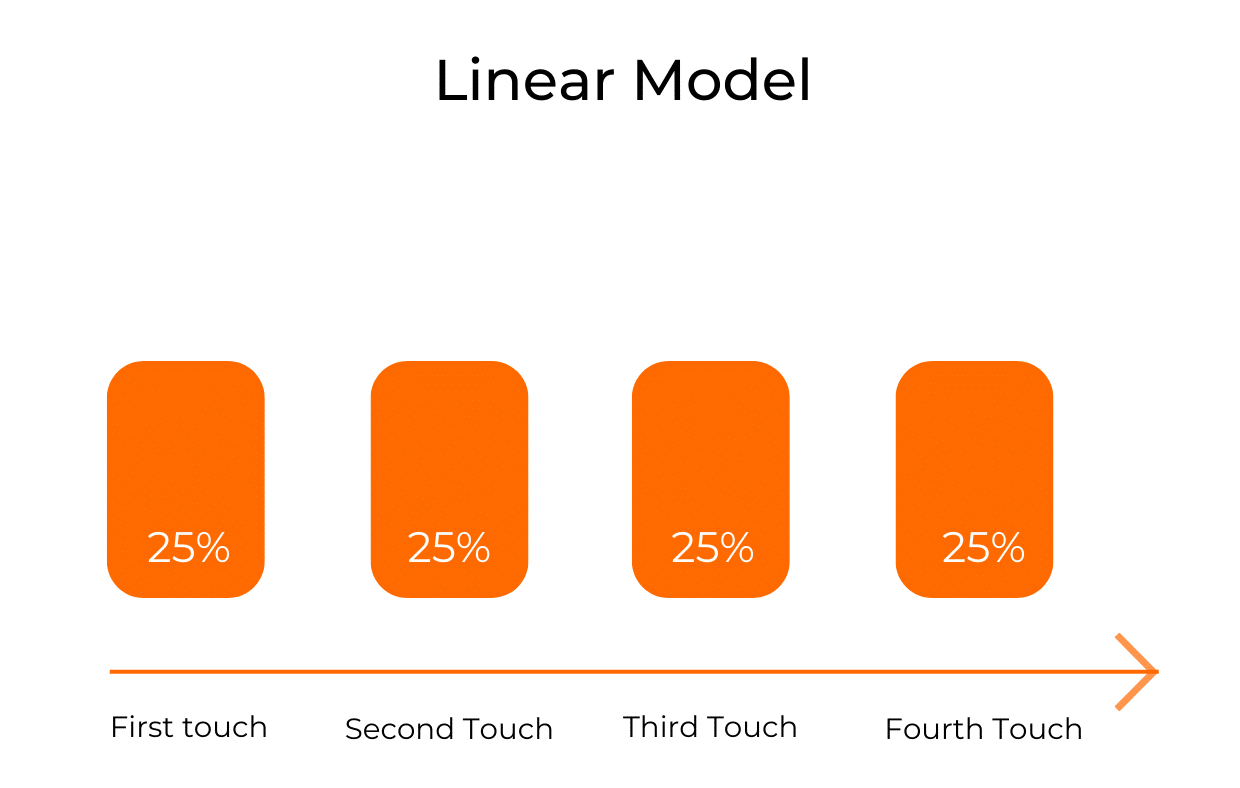
Time-Decay Model: Similar to the linear model this model also analyses the full path that leads to a conversion. It however gives more weight to the touchpoints that were engaged closer to the donation than the earlier engagement touchpoints.
An example could be a target audience member is served a Facebook ad that they click through to the landing page and enter their details to receive your free offer. They then receive an EDM when about your latest appeal but do not make a donation. After sometime they then receive an SMS that they then convert into a donor by making a one-off donation. The majority of the credit using this model would be given to the SMS, while the EDM and Facebook ad will receive less credit that correlates to their touchpoint positions.
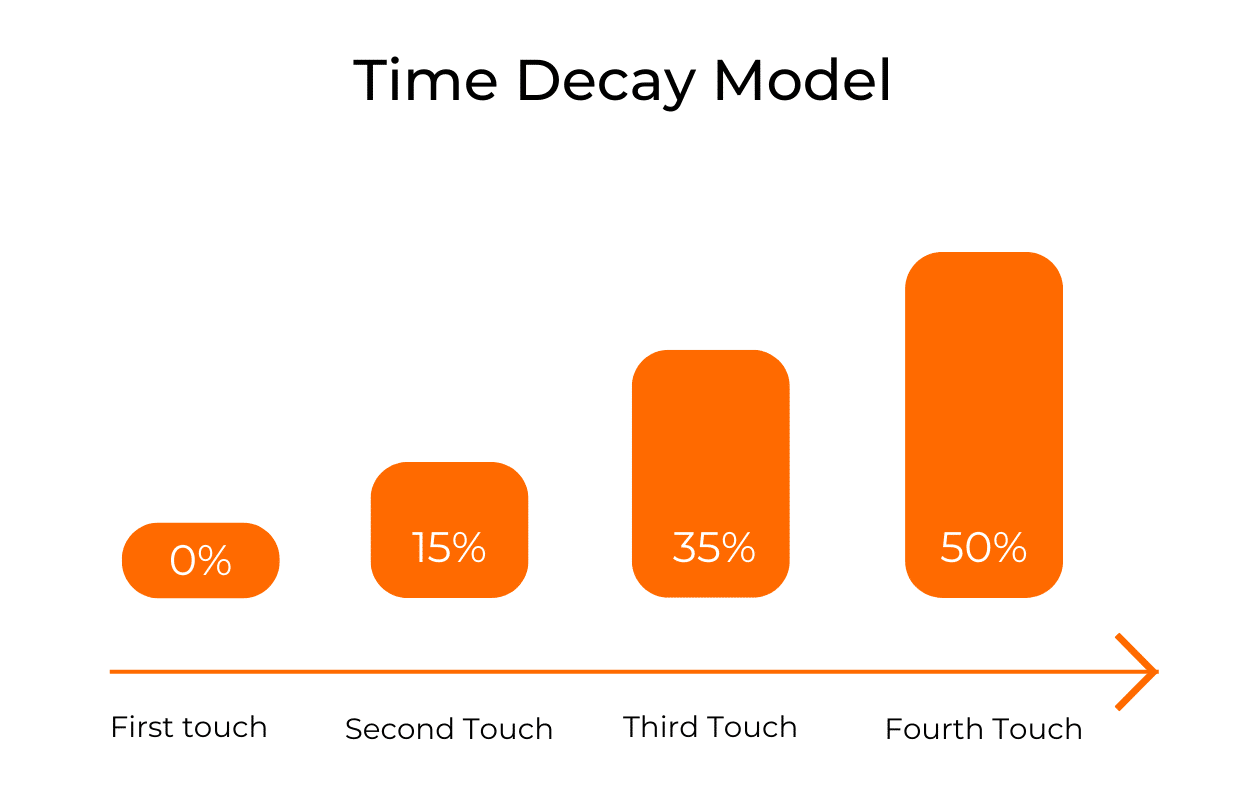
U-Shaped Attribution: The U-Shaped model gives the most weight to the first and last touchpoints taking into consideration the entire journey conversion path. The middle touchpoint still gets some credit but their weight is evenly distributed between them. This can be beneficial to understand where a user is first introduced to a campaign and where they eventually convert. The first and last touch points will be given the majority of the credit with the remaining credit distributed equally with any other touch points encountered along the journey.
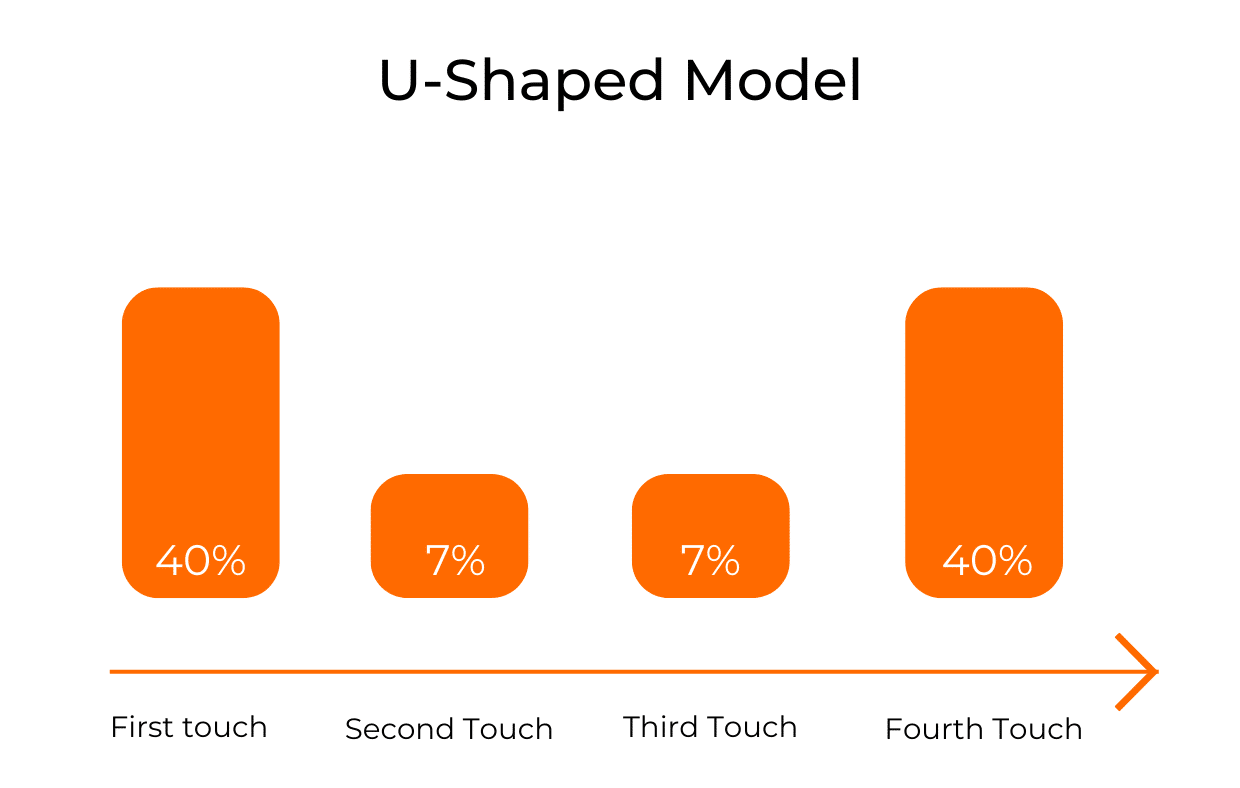
Which model should I use?
The complexity of your donor journey and the amount of marketing methods you are utilising will help you choose the right attribution model for your campaign. The more times a donor can interact with your campaign before they convert means you may need a more comprehensive multi-touch model. Alternatively if you’re trying to discover which of your channels is the best at converting customers then you may want to consider a last touch model.
There is no right or wrong answer or one size fits all when it comes to choosing which attribution model is best for you. It’s more about choosing one that will compliment your campaign and what you want to learn from it. When choosing the right model for you, ensure you take into consideration your marketing touchpoints and the journey you intend to take your donor on. Then select the model that you believe will provide the most valuable insights to your organisation and your future digital fundraising strategies.

